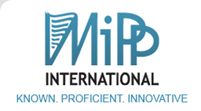Barta É.K., Szalay Zs.G., Kovács Á.E.Comparative analysis of the energy efficiency of modern environmentally friendly computers
Éva Klárné Barta
Scientific Researcher, Institute of Economics, Methodology and Law, Szent István University
Páter Károly St., 1, H-2100 Gödöllő, Hungary
Zsigmond Gábor Szalay
Doctor of Economics Sciences, Associate Professor, Institute of Economics, Methodology and Law, Szent István University
szalay.zsigmond.gabor@gtk.szie.hu
Páter Károly St., 1, H-2100 Gödöllő, Hungary
Árpád Endre Kovács
Doctor of Economic Sciences, Associate Professor, Institute of Economics, Methodology and Law, Szent István University
Páter Károly St., 1, H-2100 Gödöllő, Hungary
Abstract. As a result of technological advances, the performance of computers is growing continuously, while at the same time, their energy consumption is growing, too. Computer development needs to focus increasingly on finding energy efficient solutions to keep the operation of supercomputer centers on a sustainable level. As a result, green computing is getting more and more important in the world of supercomputers as well. Our paper examines the technical data of supercomputers (HPC) – with a focus on performance and energy consumption – on TOP500 and Green500 lists released over the past 10 years. The computing capacity of the machines on the TOP500 list of the most powerful computers is growing exponentially. Until 2017 the rate of growth of the energy efficiency indicator was slower than that of the computing capacity, therefore the total energy consumption of the machines on the TOP500 list was continuously increasing. This trend seems to have changed; in the period from November 2016 to June 2017 the growth rate of the energy efficiency of supercomputers exceeded the increase in their computing capacity. Among the supercomputers on the TOP500 list some are highly energy efficient. But for most of the machines the energy efficiency indicator is far behind the technical possibilities, and the improvements made are very slight. There is a positive correlation between the MFlopS/W indicator and the value of the RMAX indicator, so typically the computers at the top of the list have better energy efficiency indicators. However, there are still significant technical improvements needed in the future to build a sustainable exascale computer (computer capable of 1018 calculations per second).
Key words: green computing, energy efficiency, HPC, supercomputer, TOP500 list, Green500 list, exascale computer.
ATTACHMENTS: /8_Barta_i_dr.pmd.pdf







